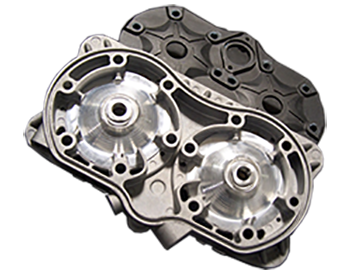Sound waves are pressure waves, but pressure is not sound.
To accurately measure the pressure of any oscillating wave one needs sophisticated high speed transducers. These are very expensive and are generally computer controlled.
It should be noted that waves in a medium (pipe for example) are oscillating. With an oscillating waveform, the amplitude of the wave will be constantly varying. There is usually a negative and a positive component (value). The shape of the wave can be uniform or very non-uniform (like I suspect an exhaust pressure wave would mimic)
When measuring any wave with a mechanical device (such as a pressure gauge) this gauge is very over-tasked for this sort of a measurement. The result would be a RMS (root mean squared) value, AT BEST, and would not accurately represent the actual value.
Let’s assume you have a steady frequency sinusoidal wave in the pipe (which we do not but we will assume for the moment) Taking a measurement with a gauge will give you the RMS value of this wave. The RMS value will be an “average” at best.
Now assume a pressure wave that is constantly varying it frequency, and amplitude (like a true pipe pulse) and now, you get a pressure that can not be measured correctly with a simple gauge-type device.
As we rise in elevation, atmospheric pressure decreases. This is a given. So, if you do NOTHING but rise in elevation, you drop pressure. So, ANY pressure measurement in a non sealed medium will be LOWER just from the rise in elevation.
Now the pipe pulses are treated as sound waves and the speed of sound is used in these calculations. The speed of sound (in a non-sealed medium) is temperature dependant. As we rise in elevation, temperature usually decreases and therefore; the speed in which the pipe waves travel are slower and this why we need to have increased pipe heat as elevation increases. You can increase the pipe heat via several methods. 1) Minimize radiation losses via wrapping the pipe with a TRUE heat barrier. 2) Increasing the internal gas heat via added power (engine enhancements etc.) these are a few. OR, you can alter the tuned length of the pipe to compensate for the slower travel.
So, one would surely benefit from a pipe that is designed around the lower atmospheric pressures that are present at the higher elevations.
BUT, let’s say you increase your engine’s internal heat and pressure via some true power increasing modifications. Now the internal pipe pressure may still be lower than if you were at sea–level BUT, it would be higher than if your engine did not have the power enhancements and you would have more rapid travel in the pipe.
So, the higher in elevation we go, the less power the engine makes unless something changes to process more air through the engine (Engine enhancements etc.). The naturally aspirated engine loses power because it can't process any more air. The engine can't magically grow displacement or increase rpm
So, what is the point to all this?? ONE point would be that the increase in elevation will produce less internal engine pressure and, as a result, less pipe pressure. Increasing the pipe’s internal pressure via stinger choking or restrictive silencers CAN allow for more pressure to be placed back in the engine via the “plugging pulse” of the pipe. BUT, this can come at a cost. The pulse’s strength and length are determinant mainly by the cone sections of the exhaust, NOT the stinger. The diameter of the stinger is a critical component. WHY? Because it has some control over the pipe’s operating temperature (internal heat). Too large of stinger and you can lower the pipe heat to a point of power-loss. Too small and you get an exhaust that can not bleed off pressure effectively and the engine will be the recipient of this “non-exhausted” heat and can cause engine failure, especially on long WOT pulls).
Get the stinger diameter just right and the engine acts like a tad shorter pipe and you can gain some power. NOTE: I said “STINGER” not “SILENCER” The silencer is located AFTER the stinger. Yes, the silencer does effect the rate of exhaust bleeding but having too large of a silencer does not effect the stinger’s operation. It does effect overall pipe temp.. having too small of silencer diameter can effect overall pipe operation due to raising the internal heat and can cause engine failure with prolonged running.
OK, so what do we know?
1) Increasing elevation will decrease pressure EVERYWHERE.
2) Pipe pressures are largely determinant on the power of the engine.
3) Internal pipe heat affects the speed of the waves in the pipe.
4) The proper way to increase pipe heat and pressure is to design a pipe that accounts for the higher elevation.
5) The Stinger section of the pipe has a strong effect on the RETURNED internal pipe heat to the engine and how fast the pipe cools or heats.
6) Increasing the returned pipe pressure via stinger or silencer choking can cause severe engine failure but can also aid in some cases.
7) Internal pipe pressure can not be accurately measured via ANY mechanical gauge.
8) More power creates more internal pressure/heat and can allow a pipe designed for low elevation to work at high elevation.


